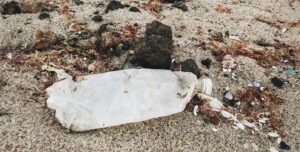From the postcard-perfect Coral Bay to the hidden beauty of Secret Cove, these spots promise stunning photos and unforgettable views.
GVI
Posted: August 29, 2024

Petrina Darrah
Posted: May 16, 2023
Plastic pollution is a critical environmental issue that continues to grow in magnitude. Millions of tons of plastic waste enter the ocean each year, and it has become a significant threat to marine life. The scale of the problem is massive and must be understood if we are to find effective solutions to protect our oceans. One of the most critical impacts of plastic pollution on marine animals is its ability to harm and kill them.
The amount of plastic waste produced globally is staggering. According to a report by the United Nations, there will be more plastic in the ocean than fish by 2050. This projection illustrates how rampant plastic pollution has become worldwide. Plastic production has exploded, and with the increased demand, plastic waste has found its way into every corner of the planet. Even remote areas like the Arctic are affected by plastic pollution. As the plastic breaks down, microplastics are produced, and these particles are harmful to marine life. They are small enough to be ingested by tiny marine creatures, entering the food chain, and eventually making their way up to humans. These particles can also contain toxins, posing a risk to marine life and human health.
Plastic pollution affects marine animals in several ways. The impact of plastic on marine animals is devastating, and it is essential to understand the different effects. Sea turtles, for example, often mistake plastic bags for jellyfish and eat them. Once ingested, the plastic blocks their digestive systems, leading to starvation. Similarly, plastic fishing nets and other debris can entangle marine animals, leading to suffocation or drowning. Entanglement can also cause severe injuries, which may become infected and, in some cases, be fatal. Plastic pollution can also cause chemical contamination, which can harm the reproductive systems of marine animals.
Estimating the exact number of marine animals that die from plastic pollution is challenging. The impact of plastic pollution is often underestimated, and it is difficult to determine the cause of death of marine animals. The majority of marine animal deaths are unobserved, so it is challenging to estimate accurately. However, scientists have found that the number of animals affected by plastic pollution is vast. A study by the World Wildlife Fund estimated that at least 100,000 marine animals die from plastic pollution every year. This number is likely an underestimate, as it only accounts for a few species. More research needs to be done to determine the full extent of plastic pollution on marine animals.
Many marine animals are affected by plastic pollution, but some species are more vulnerable than others. Sea turtles, for example, are at high risk of ingesting plastic, as they mistake plastic bags for their favourite food, jellyfish. Plastic pollution also affects marine mammals like whales and dolphins, which can get entangled in plastic debris, leading to injuries or death. In many cases, plastic pollution affects not only individual animals but entire ecosystems. Coral reefs, for example, are damaged by plastic pollution, which can cause disease and bleaching. This damage, in turn, affects the fish and other marine animals that rely on the coral reef as their habitat. If the coral reef is destroyed, the entire ecosystem is affected.

Reducing plastic waste is essential to protect our oceans and marine animals. Individuals can make a difference by reducing their plastic consumption, recycling, and disposing of plastic waste responsibly. Collectively, we can make an even more significant impact. Volunteering with GVI can help address the problem of plastic pollution in the oceans.
GVI offers a range of marine conservation programs that aim to protect marine animals, preserve coral reefs, and reduce plastic pollution. By volunteering with GVI, individuals can gain valuable experience and contribute to global efforts to address plastic pollution. GVI’s marine conservation programs include activities like beach cleanups, marine debris surveys, and coral reef monitoring. Participants work with local communities and marine scientists to develop sustainable solutions to the problem of plastic pollution. Volunteering with GVI is a great way to make a positive impact on the environment and protect marine animals.
In conclusion, plastic pollution is a critical environmental issue that has far-reaching impacts on marine animals. The amount of plastic waste in the ocean is growing rapidly, and it is essential to understand the scale of the problem to find effective solutions. Plastic pollution affects marine animals in several ways, including entanglement, ingestion, and chemical contamination. The number of marine animals that die from plastic pollution is challenging to estimate, but the impact is significant. Sea turtles, whales, dolphins, and coral reefs are among the species most vulnerable to plastic pollution. However, there are actions that individuals and organisations can take to help address the problem. Volunteering with GVI is a great way to contribute to global efforts to protect marine animals, preserve coral reefs, and reduce plastic pollution. By working together, we can make a positive impact on the environment and protect marine life for future generations.
By Petrina Darrah

From the postcard-perfect Coral Bay to the hidden beauty of Secret Cove, these spots promise stunning photos and unforgettable views.
GVI
Posted: August 29, 2024